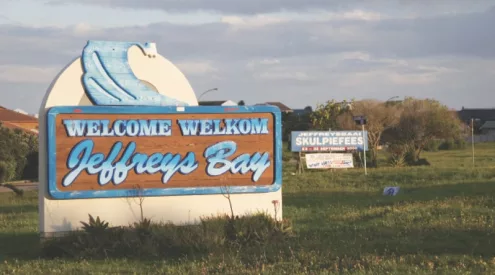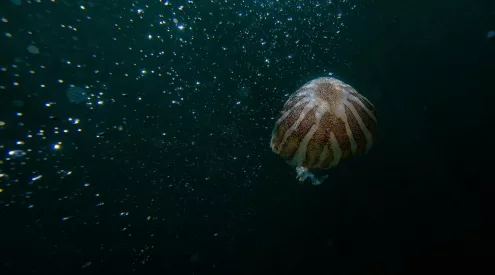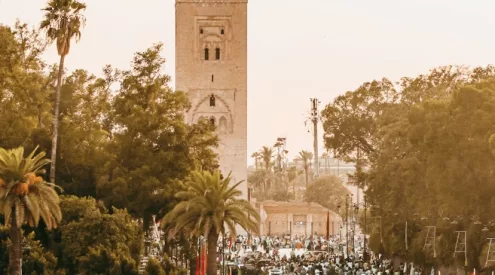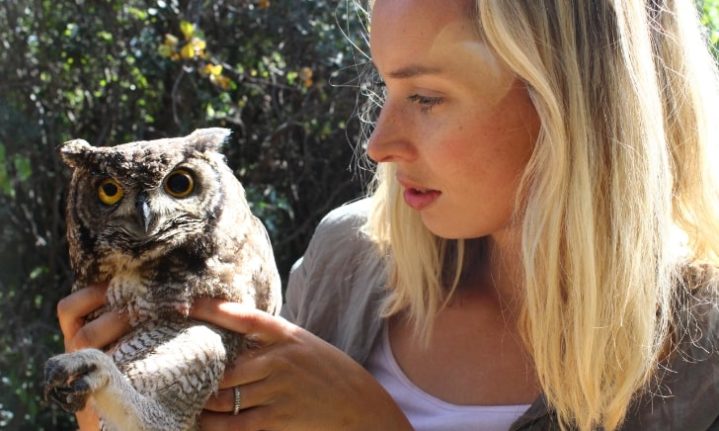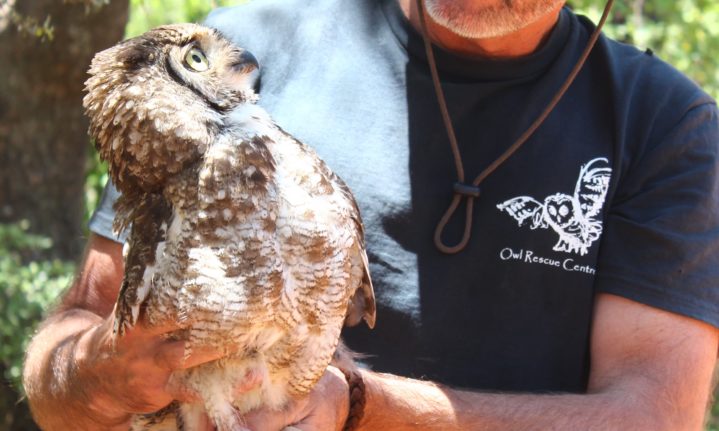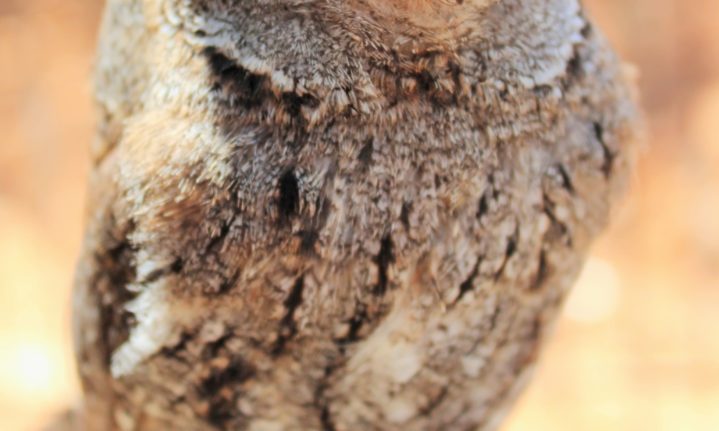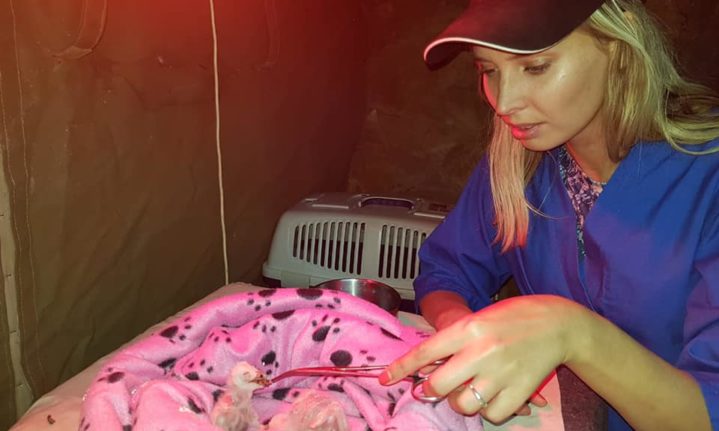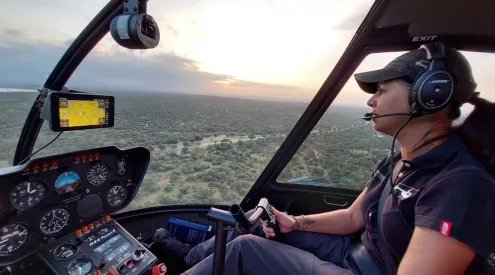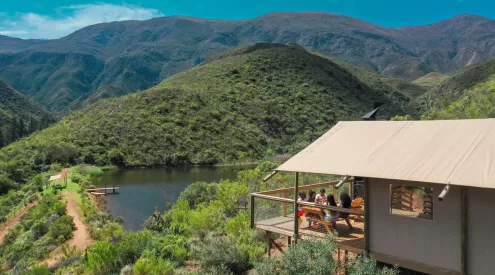The Owl Rescue Centre in North West province is a remarkable place. Not only do they rescue and rehabilitate injured, ill and orphaned owls, they strongly believe in releasing them back into their natural environment where they belong.
We spoke to co-founder and owner Danelle Murray about a day in the life of a dedicated owl conservationist.

Danelle Murray helps owls in need.
What happens on a regular day-to-day basis at the Centre?
No two days at Owl Rescue Centre are the same. There are the regular feeding, cleaning and care (changing of bandages, administering of medication, etc) that happens daily. Then there are calls from people asking for our assistance in the rescue of owls or wildlife in distress. This can take us on adventurous journeys all over the country.
Many of the rescues are in built-up areas and industrial buildings, but some rescues even has us crawling on our hands and knees inside a dark cave or climbing up a 30-metre-high tower. We focus on owl species, but often help with any other wildlife rescues where required.
All the wildlife that are taken in by Owl Rescue Centre are rehabilitated and released back into the wild. We have several release sites where we camp out while we monitor and help with the animals’ reintroduction back into the wild.
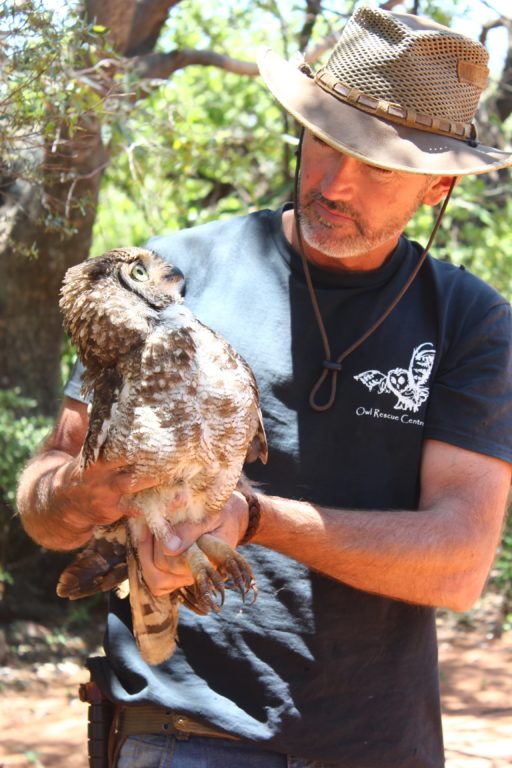
Brendan works along side Danelle to save our feathered friends.
What motivates you to carry out this incredible work?
For this, I would like to quote a piece from our new book, Return to the Wild:
‘When we started working with wildlife full time, it was to fulfil a need. Not only a need for wildlife to be protected, but also a need within ourselves. Brendan [Danelle’s husband] and I are both philosophical in nature and we craved to spend our time doing something that carried meaning. Someone once told me that the purpose of life is not to be happy, but simply to have a purpose. Working for a cause is the true key to unlocking happiness.
‘Brendan and I had reached a defining point in our lives when we decided to focus all our attention on protecting owls. It was one of those rare opportunities when life pushes you down so hard that the only thing left to do, is to give in and to make a change. We stopped worrying about money and about earthly possessions; things that brought us little joy and was easily lost; it would only leave us feeling empty. We instead decided to dedicate our lives to saving owls.
‘There would be times that would be hard. Harder than one could imagine. I would shed many tears over the pain, death, and destruction that I would bear witness of in this line of work. There would be times of utter frustration in the strife against cruelty. At times I would have feelings of hopelessness, despair, and despondency. These fleet feelings of desperation in which I could nearly concede defeat, is quickly dissolved by the next opportunity to heal, reintegrate and to set free.’

How many owls do you usually care for at the centre?
The number of owls vary depending on the time of the year (breeding season plays a part) and the scheduled releases. In some cases, owls can be release shortly after intake, while others take longer to recover. We take in on average 1,500 owls every year.
Are there any memorable rescue stories?
We received a call early one morning about a Barn Owl that got himself stuck in a tree in Florida, Roodepoort. The Barn Owl was tangled in fish gut and hanging from a small branch 10 metres up the tree. Tried as we may, we couldn’t reach him with the equipment we had. We networked with a few other rehabilitation professionals and managed to get the local Fire Department to meet us at the site.
Brendan could climb up the Fire Engine’s ladder to reach and free the poor owl, who had been stuck for a couple of hours. We brought him back, hydrated and stabilised him and he could be released within a few days. The cooperation of everyone in this rescue, to help us to save a life, was certainly heart-warming.
How can the public assist you and get involved?
The toughest part of this job is not the relentless long hours or the thousands of kilometres travelled every month rescuing wildlife. Or even those dodgy petrol garage pies that we embarrassingly eat too many of.
The hardest part is asking for donations to carry on doing the above. Our rescues have more than doubled this year compared to all previous years and our funding has halved in that same time.
Donations we receive are 100% used for rescue costs, fuel, meds, animal food, vehicle repairs and other costs directly linked to running the sanctuary and really nothing else.
If you would like to support our wildlife rescues and rehabilitation, please donate to:
Owl Rescue Centre NPC Nedbank
Current Account 103 081 9580
Branch Code 198 765
Or contact [email protected] or 082 719 5463.
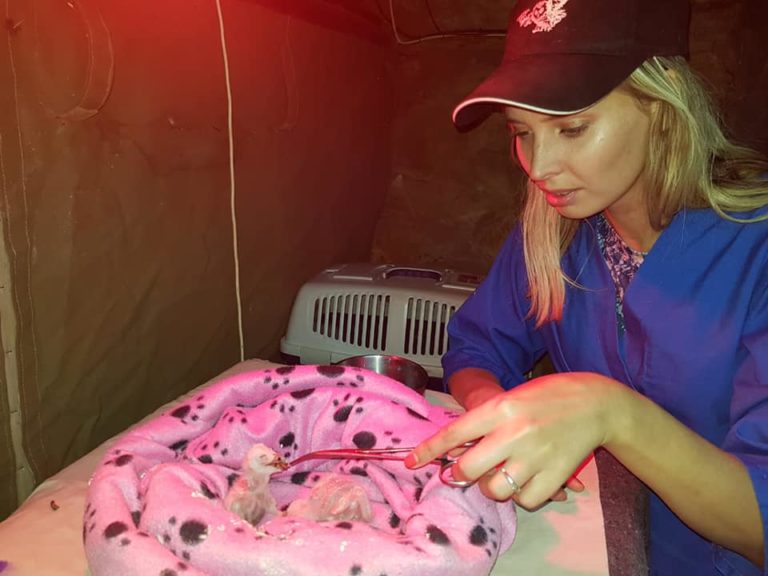
Pictures: Supplied


